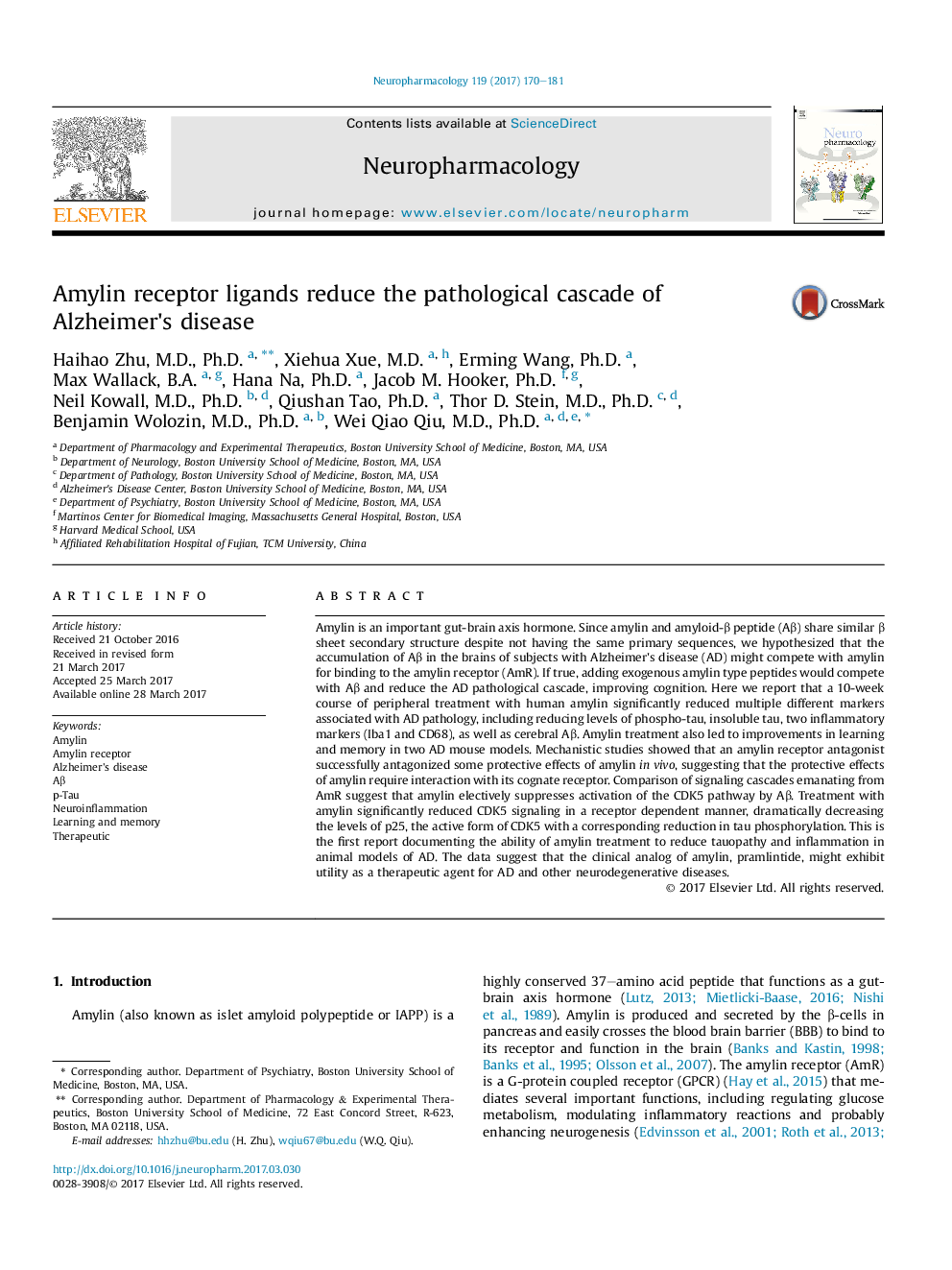| کد مقاله | کد نشریه | سال انتشار | مقاله انگلیسی | نسخه تمام متن |
|---|---|---|---|---|
| 5548918 | 1556598 | 2017 | 12 صفحه PDF | دانلود رایگان |
- Peripheral amylin treatment significantly reduced multiple different markers associated with AD pathology in the brain.
- This is the first report documenting the ability of amylin to reduce tauopathy and inflammation in the AD mouse models.
- Amylin receptor (AmR) probably mediates these beneficial effects of amylin treatment for AD.
Amylin is an important gut-brain axis hormone. Since amylin and amyloid-β peptide (Aβ) share similar β sheet secondary structure despite not having the same primary sequences, we hypothesized that the accumulation of Aβ in the brains of subjects with Alzheimer's disease (AD) might compete with amylin for binding to the amylin receptor (AmR). If true, adding exogenous amylin type peptides would compete with Aβ and reduce the AD pathological cascade, improving cognition. Here we report that a 10-week course of peripheral treatment with human amylin significantly reduced multiple different markers associated with AD pathology, including reducing levels of phospho-tau, insoluble tau, two inflammatory markers (Iba1 and CD68), as well as cerebral Aβ. Amylin treatment also led to improvements in learning and memory in two AD mouse models. Mechanistic studies showed that an amylin receptor antagonist successfully antagonized some protective effects of amylin in vivo, suggesting that the protective effects of amylin require interaction with its cognate receptor. Comparison of signaling cascades emanating from AmR suggest that amylin electively suppresses activation of the CDK5 pathway by Aβ. Treatment with amylin significantly reduced CDK5 signaling in a receptor dependent manner, dramatically decreasing the levels of p25, the active form of CDK5 with a corresponding reduction in tau phosphorylation. This is the first report documenting the ability of amylin treatment to reduce tauopathy and inflammation in animal models of AD. The data suggest that the clinical analog of amylin, pramlintide, might exhibit utility as a therapeutic agent for AD and other neurodegenerative diseases.
Journal: Neuropharmacology - Volume 119, June 2017, Pages 170-181
